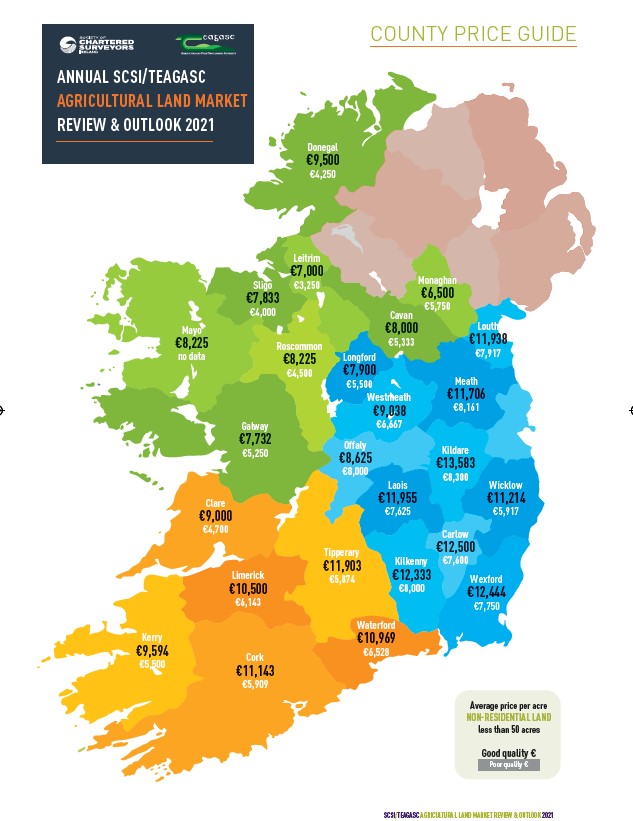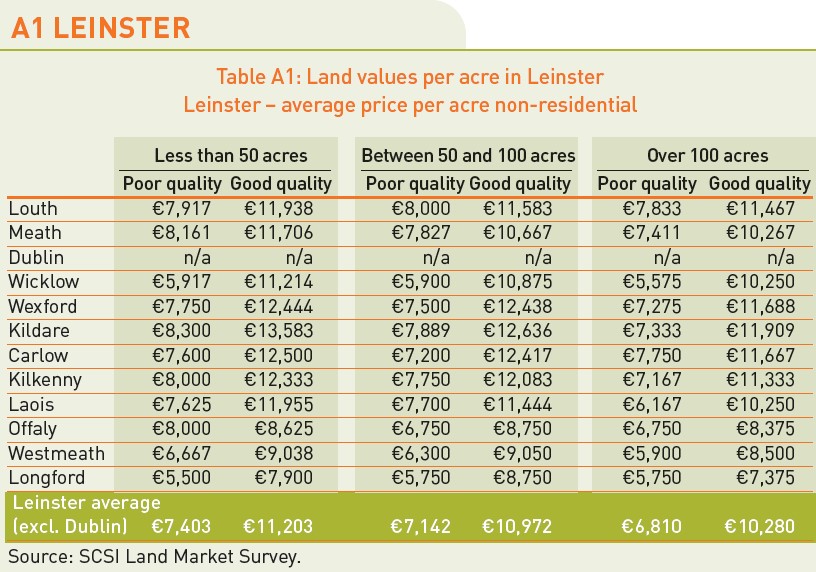National average farmland prices ranged from €5,900/ac for poor quality to €9,381/ac for good land in 2020, according to a new report.
The Society of Chartered Surveyors Ireland / Teagasc Agricultural Land Market Review and Outlook Report 2021 revealed the figure today (Tuesday, April 20).
In the new report, the two organisations outlined that land prices are predicted to rise by 4% on average this year.
A new feature in this year’s annual survey, the eighth in the series, is that it now provides a county-by-county breakdown on prices of good land and poor-quality land in a price guide (below).

In a departure from previous years, the SCSI and Teagasc also provided land prices for both good-quality and poor-quality land in each county, as well as a round-up per province.
In addition, the SCSI/Teagasc report provides a farmland value breakdown depending on the size of the holding, offering three categories: less than 50ac; between 50 and 100ac; and over 100ac.
Three tables – Leinster, Munster and Connacht/Ulster – were provided with a breakdown of these prices in the report (as can be viewed below).
Commenting on the factors surrounding demand for farmland – farmers and farm fortunes – Teagasc economist Dr. Jason Loughrey said that while Covid-19 may have impacted the volume of sales, it had little impact on agricultural commodity prices last year.
This helped to support farm incomes and land values at a time of great uncertainty, he said, adding:
“The closure of hotels and restaurants and the contraction in the tourist business led to a sharp fall in sales of food and drink through these channels. However, this was largely offset by increased food and drink consumption within the home.
“Overall it is estimated that the average farm income in Ireland increased by 6% in 2020 and this year we forecast an increase of a further 3%.
“Looking at the various farm sectors, last year was a good one for sheep farmers in particular, as they benefitted from higher prices – as did pig producers.
“Dairy farm incomes were stable, while incomes on cattle rearing farms increased. There was no change on other cattle farms.
“Tillage farmers did have a disappointing year due to adverse weather conditions which led to low yields and a drop in income,” the Teagasc economist added.
“While farmers benefitted from lower input costs last year, they are facing some cost pressures this year, with feed, fertiliser and fuel prices all on the increase.
“Lamb prices are expected to be significantly higher in 2021 relative to 2020 and farmers with a sheep enterprise will therefore benefit. A slight improvement in cattle farm income is expected with dairy incomes remaining stable.
“The outlook for tillage farm income this year is contingent on cereal yield developments.
“Normal weather through to the harvest period would see a significant improvement in tillage farm income in 2021” Dr. Loughrey concluded.



